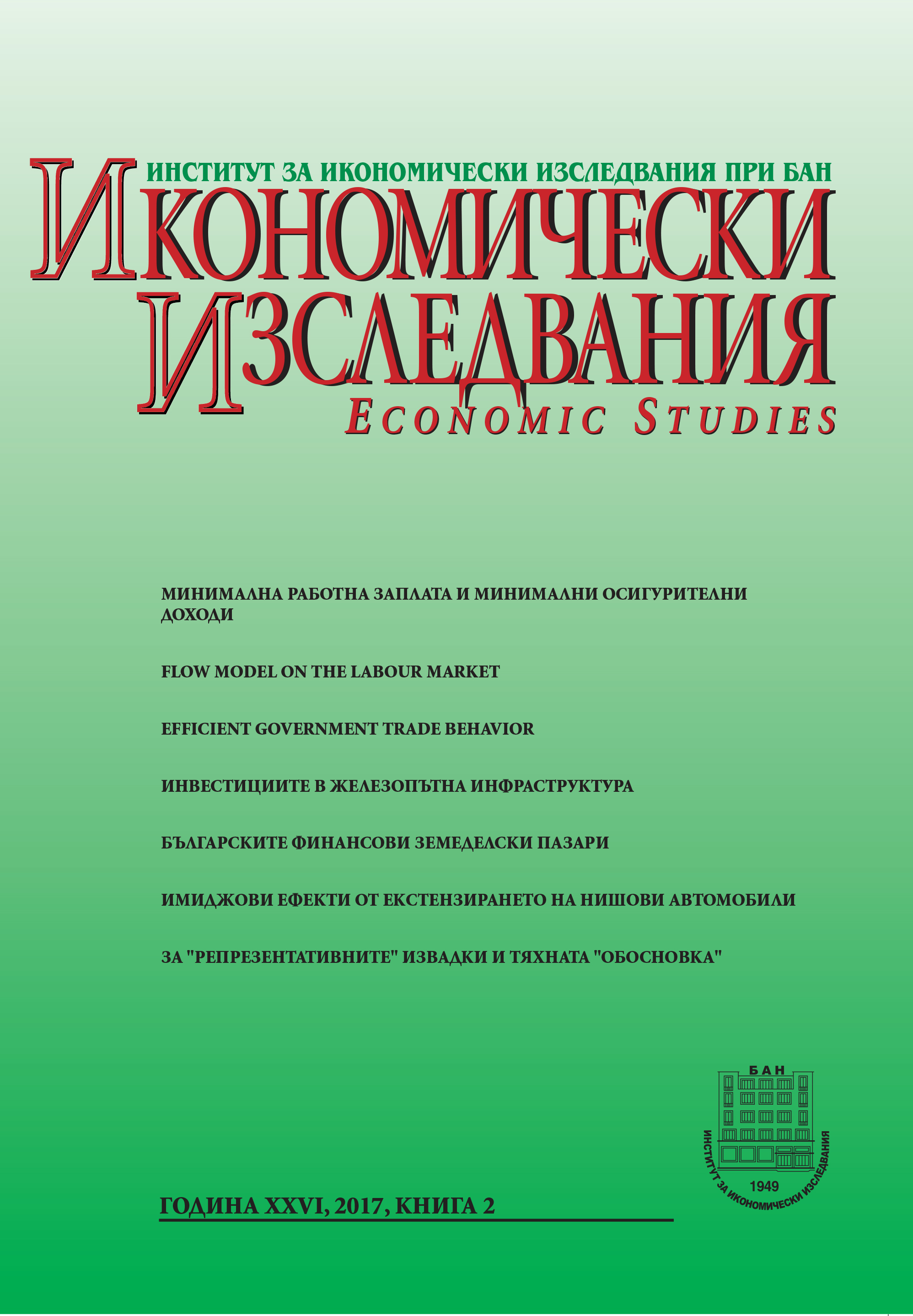Unemployment and a Stock – Flow Model on the Labour Market in the Republic of Macedonia
Unemployment and a Stock – Flow Model on the Labour Market in the Republic of Macedonia
Author(s): Predrag Trpeski, Verica Janeska, Marijana Cvetanoska, Aleksandra LozanoskaSubject(s): Economy
Published by: Институт за икономически изследвания при Българска академия на науките
Keywords: JEL: J21; J64
Summary/Abstract: The aim of this paper is to analyse the unemployment on the basis of administrative data sources and application of the stock-flow model. The intention is to recognize the changes and features of the unemployment regarding stocks and flows of the main segments on the labour market: employed, unemployed and inactive population in the Republic of Macedonia. Main reasons for the implementation of stock – flow model for determining the level of unemployment in Macedonia are following: a) Labour Force Survey (LFS) used by State Statistical Office (SSO) is based on the Census from 2002, therefore the sample used for calculating the level of unemployment is inadequate; and b) contrary to any economic logic, during the great global economic crisis and in the period after the crisis, the unemployment in Macedonia permanently decreased in conditions when the economy registered negative rates of economic growth and decline in industrial production over a longer period of time. The application of the stock – flow model, for the period 2008-2014 shows that the unemployment has not been reduced, i.e. the unemployment rate have stagnated or even increased. This is contrary to the trend of unemployment changes according to LFS of SSO. Thus, in 2014 the unemployment rate is higher than in the previous years by both alternatives in the calculations. According to our findings, the application of stock-flow model gives more realistic explanation of the changes and current situation on the Macedonian labour market, than the statistical data from the LFS of SSO in Macedonia.Our analysis shows that in a country with high and long-term unemployment, where the phenomenon of discouraged workers is expressed, and there has not been made a Census of the population for a longer period of time, accompanied by major demographic changes such as: an aging population and massive emigration from the country, the implementation of stock – flow model has significant analytical value in determining the unemployment and its analysis.
Journal: Икономически изследвания
- Issue Year: 2017
- Issue No: 2
- Page Range: 41-63
- Page Count: 23
- Language: English

